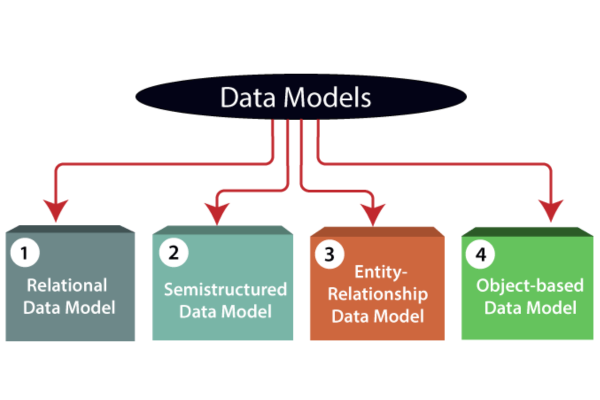In today’s data-driven world, data modeling plays a crucial role in structuring and organizing information effectively. A data model defines how data is stored, accessed, and manipulated within a database management system (DBMS). There are various types of data models, each designed to serve specific purposes and cater to different requirements. In this article, we will explore the most common types of data models and their characteristics.
Types of Data Models
- Hierarchical Data Model
The hierarchical data model represents data in a tree-like structure, where each record is linked to one or more parent records. It follows a top-down approach, where data elements are organized in a hierarchical manner. This model is typically used in mainframe-based database systems, such as IBM’s Information Management System (IMS). However, it lacks flexibility and can become complex when dealing with large datasets.
- Network Data Model
The network data model extends the hierarchical model by allowing records to have multiple parent and child relationships. It introduces the concept of sets, which represent collections of records. The relationships between records are defined through pointers or links. While this model offers more flexibility than the hierarchical model, it can be challenging to navigate and maintain due to its complex structure. The CODASYL (Conference on Data Systems Language) database management system is an example of a network data model.
- Relational Data Model
The relational data model is widely used in modern databases. It organizes data into tables consisting of rows (tuples) and columns (attributes). The relationships between tables are established through primary and foreign keys. This model ensures data integrity, provides a flexible querying language (SQL), and supports a wide range of applications. Relational databases like MySQL, Oracle, and Microsoft SQL Server are based on this model.
- Object-Oriented Data Model
The object-oriented data model is designed to handle complex data structures. It treats data as objects that encapsulate attributes (data fields) and behaviors (methods). This model allows for inheritance, polymorphism, and encapsulation, making it suitable for modeling real-world entities and complex relationships. Object-oriented databases (OODBs) like MongoDB and CouchDB are based on this model.
- Entity-Relationship (ER) Data Model
The entity-relationship data model focuses on representing the relationships between entities. It uses entity-relationship diagrams (ERDs) to visualize and define the entities, attributes, and relationships within a database. This model helps in understanding the overall structure of the data and is widely used in the initial stages of database design. The ER model is often used in conjunction with other data models, such as the relational model.
- Dimensional Data Model
The dimensional data model is commonly used in data warehousing and business intelligence applications. It organizes data into dimensions and facts. Dimensions represent the descriptive attributes or characteristics of the data, while facts store the numerical measures or metrics. This model allows for efficient querying and analysis of large volumes of data. The star schema and snowflake schema are popular dimensional data modeling techniques.
- NoSQL Data Models
NoSQL (Not only SQL) databases have emerged as an alternative to traditional relational databases, especially for handling big data and unstructured data. NoSQL data models, such as key-value, document, columnar, and graph, provide flexible and scalable solutions for specific use cases. These models emphasize horizontal scalability and are often used in web applications, real-time analytics, and content management systems.
Conclusion
Data models serve as blueprints for organizing and representing data in a structured manner. The choice of a data model depends on the specific requirements of an application or system. From the hierarchical and network models of the past to the popular relational model and the modern NoSQL models, each type offers unique features





Leave a Reply